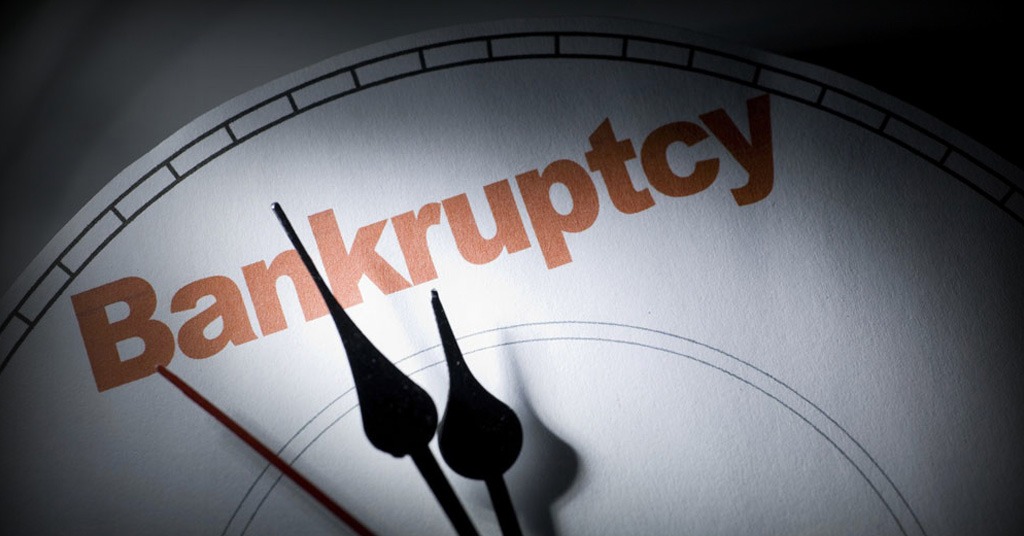This season the “bankruptcy” word has hit the headlines in many countries of the world

Bankruptcy: when and how to file for it. Source: flickr.com
This season the “bankruptcy” word has hit the headlines in many countries of the world. The frequency of this topic’s appearance is second only to news of the spread of coronavirus. Both subjects are related, of course, since the unprecedented quarantine measures became a stab in the back for most businesses dealing with bankruptcy proceedings now.
The most vulnerable industries in the current crisis include:
- Aviation
- Logistics
- Passenger transport
- Non-essential retail
- Manufacturing and construction
- Restaurants & hotels
- Tourism
- Fuel production
Swedish authorities have estimated that the number of bankruptcies in March and April 2020 showed a sharp increase compared to the same period last year. In particular, the hotel and restaurant industry bankruptcies grew by 123% and 141% during these spring months. Other industries like information & communication, law, economics, science & technology, etc. also witnessed bankruptcy numbers rise over 60%. We believe that the situation is similar in many countries.
When should you file for bankruptcy?
Both businesses and individuals have a right to file for bankruptcy when they can’t manage their debt pile in any other way.

When should you file for bankruptcy? Source: shutterstock.com
Some alternative strategies to bankruptcy include
- debt settlement – an agreement with creditors to pay less than you actually owe;
- debt consolidation – access to a new credit line or a loan that allows you to pay off your current debts;
- selling some assets;
The bankruptcy option is a double-edged sword. On the one hand, it helps people and businesses write off their debts and start anew. On the other hand, it definitely affects your credit score and future ability to manage finances.
The tacit rule is considering filing when paying off your debts is likely to require most of your income for the next five years at least.
Filing for bankruptcy may be your last resort. At the same time, don’t wait until you’re too deeply involved with the debt burden. After all, you’ll need some money to pay a bankruptcy-related fee to the court and attorneys.
Types of bankruptcy
Every country has its own legislation on bankruptcy proceedings. Therefore, we shall consider the most common types without referring to specific laws.
- Liquidation bankruptcy – the assets of the business or individual are sold off to eliminate debts;
- Large reorganization – usually the most complex and the most expensive form of bankruptcy. It involves the downsizing of business operations to reduce expenses, as well as re-negotiating of debts;
- Repayment plan – the debtor pays a portion of their debt with monthly payments for 3 to 5 years to a trustee who distributes it to the debtor’s creditors;
- Administration – an administrator may recapitalize the business, sell the business to new owners, segregate it into elements that can be sold, and close the remainder. All the activities are performed on behalf of the creditors.
How to officially become bankrupt?

How to officially become bankrupt? Source: shutterstock.com
- Check if you’re eligible. Get more information on the bankruptcy laws in your country. Look for the legal requirements to the applicants. Mind that some types of debts are not legally discharged. Moreover, in order to file for bankruptcy, a corporate entity must be legally authorized to do so. The matter of who should authorize the filing is defined by state laws and often depends on the entity’s governance documents.
- Prepare documentation. Compile all your financial records – debts, assets, income, expenses, tax returns, real estate valuations, etc.
- Receive credit counseling if needed. In some countries like the US, this step is a must. In others, it may be highly recommended. Professional advice can help individuals and business owners explore other possibilities of debt reconciliation and avoid court proceedings.
- Find a lawyer. In many countries, you can legally present your case without an attorney’s help. However, there are usually many legal forms to fill in and important decisions to make. Not anyone can successfully navigate the jungles of legal documents. Misunderstanding of the law or making mistakes in the process can affect your rights and opportunities. If you can’t figure it out on your own and can’t afford a lawyer, at least, seek one of the free legal counseling services.
- File a petition for bankruptcy. Fill in all the necessary forms and officially register your intent. The application forms can usually be found online or at the relevant court premises. As a rule, the petitioners can choose the court located where they live, maintain their business, or keep their primary assets.
- Pay the fee. Filing for bankruptcy is not free of charge. For instance, in the US the bankruptcy fees exceed $300. In individual cases, this amount can be paid in installments or waived. These options require additional applications and are granted only upon careful consideration of the person’s finances. In the UK, the total fee is over £650, but if you pay it online, installments are available.
- If you have filed for bankruptcy, the court needs some time to review your case. The terms vary from country to country. In some cases, applications may be rejected or additional details are requested. Otherwise, you’re officially declared bankrupt.
- As soon as your forms are processed at the court and approved, you will receive:
-
- Your bankruptcy case number,
- The name of your bankruptcy trustee,
- The date, time, and location of your meeting with your trustee.
What happens next

If you file as an individual, your debt gets blocked right away. Source: shutterstock.com
Filing for bankruptcy is a legal process that either reduces, restructures, or eliminates your debts.
Filing for business bankruptcy means someone else (in this case, the bankruptcy trustee) steps in to liquidate your corporate assets and settle its debts. The bankruptcy court can also consider a restructuring plan as a solution to the debt predicament. In any way, your corporate debts will now be managed in agreement with the court ruling.
If you file for bankruptcy as an individual, your debt gets blocked right away to keep creditors from collecting. While the stay is in place, they can’t garnish your wages, deduct money from your bank account, or go after any secured assets.
Soon after filing, you will be required to attend a meeting with the trustee and, optionally, some creditors.
If your bankruptcy is uncontested, most negotiations will happen between your attorney, the trustee, and your creditors. You may not even visit the court. If creditors file adversarial motions, you may need to appear at the confirmation hearing. In this scenario, you’ll be notified.
During the bankruptcy proceedings, you are likely to have major financial restrictions. They depend on local legislation.
For instance, in the UK, you can’t borrow more than £500 without informing the lending party that you’re bankrupt. You can’t be the director of a limited company, and you can’t occupy any top executive positions without a court’s permission.
In the US, the company’s plan for bankruptcy reorganization will cancel the existing equity shares. The stocks may continue to be traded, but at a very low price. Many CEOs are personally penalized for corporate bankruptcy too.
After receiving your discharge, you should refrain from new loans for a while. Your credit score will have been impacted long-term, anyway, so most banks won’t even give you a loan.
Beware that you can’t declare bankruptcy too often. In most countries there is a restriction period on new claims. Hence, be very careful with any new indebtedness, even if you have found some creditors willing to take the risk.
You may need to open a new bank account after the bankruptcy too, since you won’t be in control of your previous assets and accounts.
SEE ALSO:









